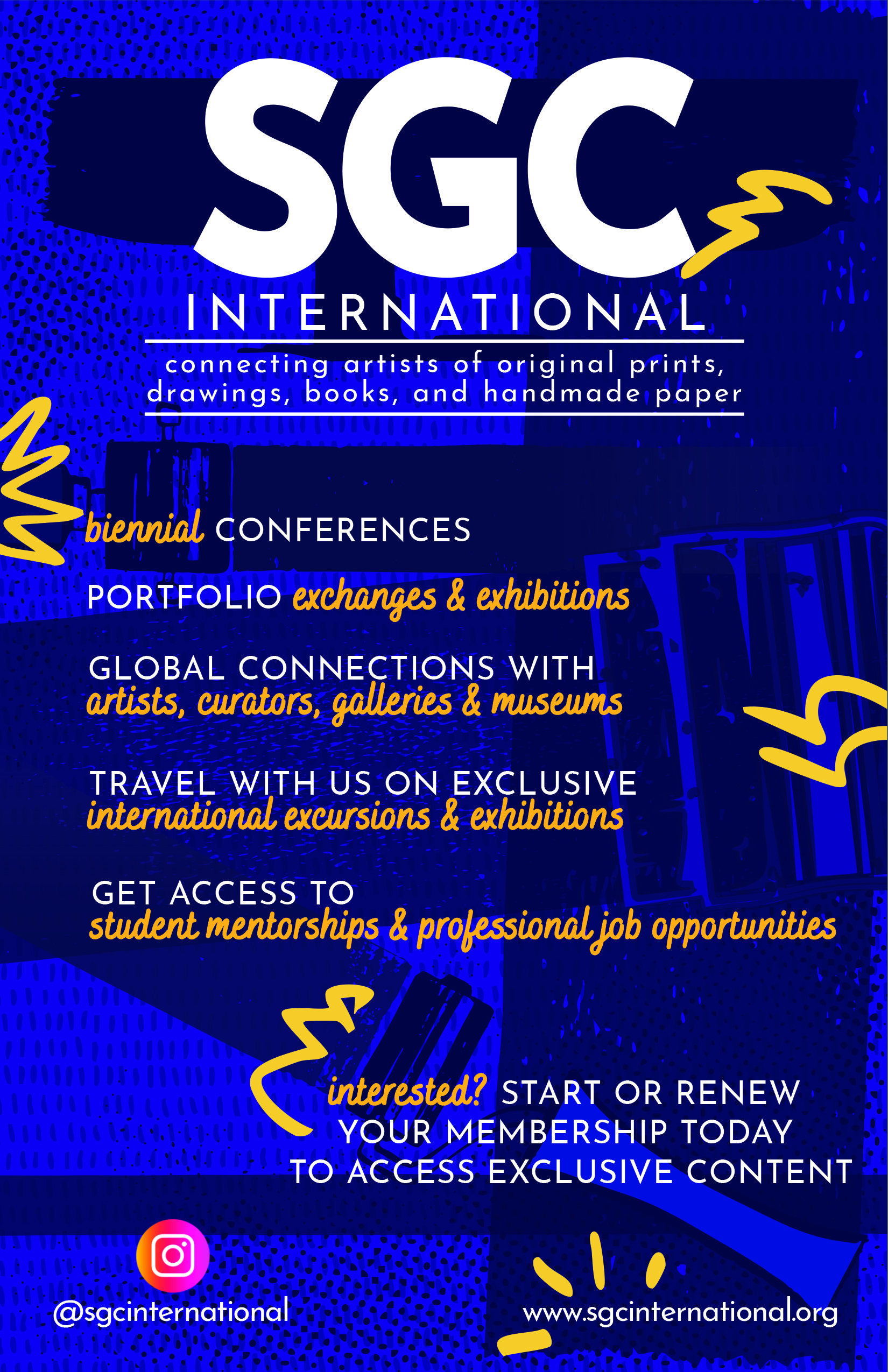
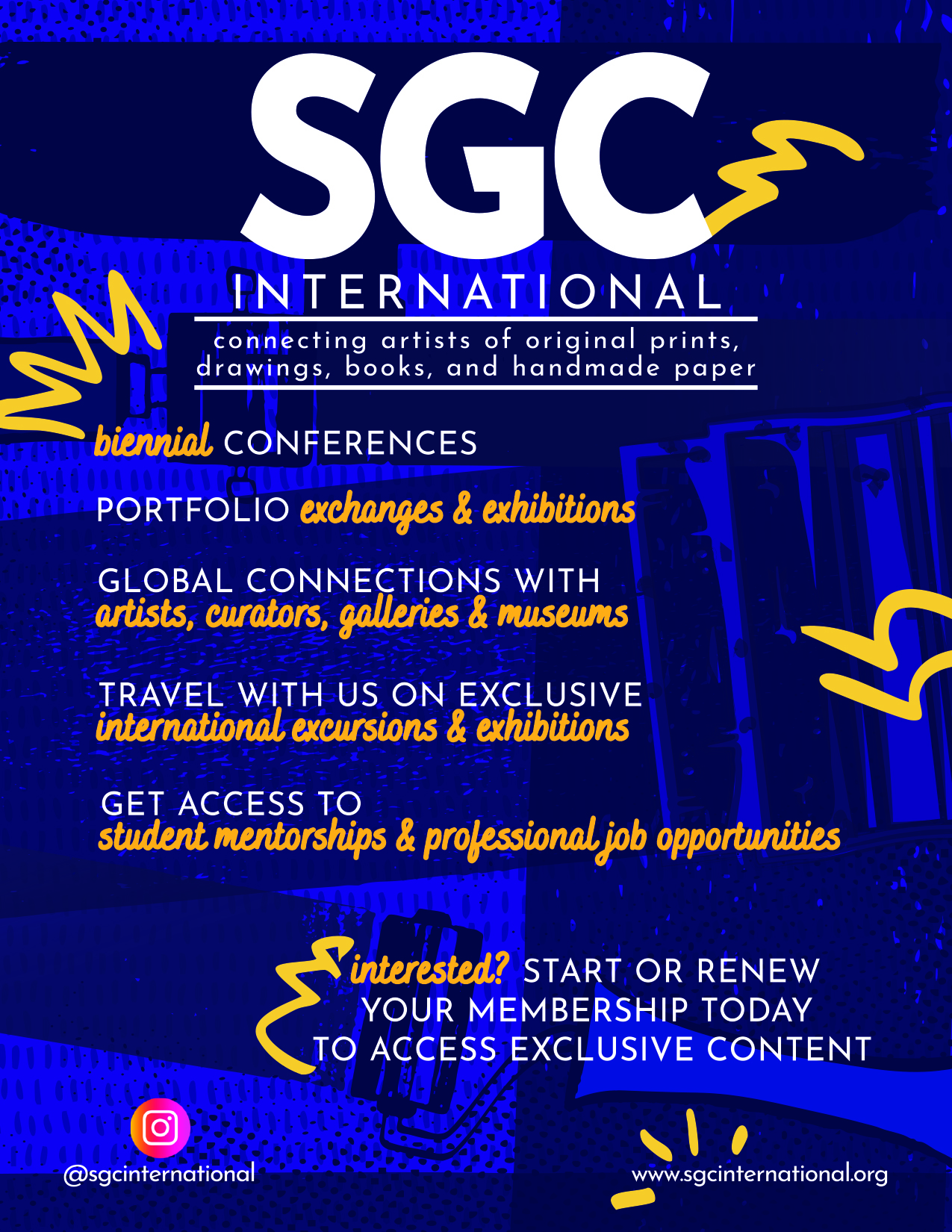
Extra! Extra!
Read recent SGCI Newsletters Below!
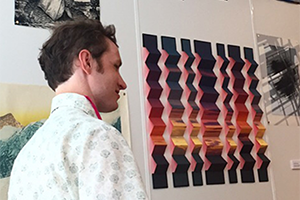
Web Editor & Curator Introduction
Dear SGC International Members,As SGCI transitions from Graphic Impressions towards expanding our website into an online journal with continuously evolving content, I am pleased to introduce you to our newly appointed web editor, Louise Fisher, and web curator, Blake...
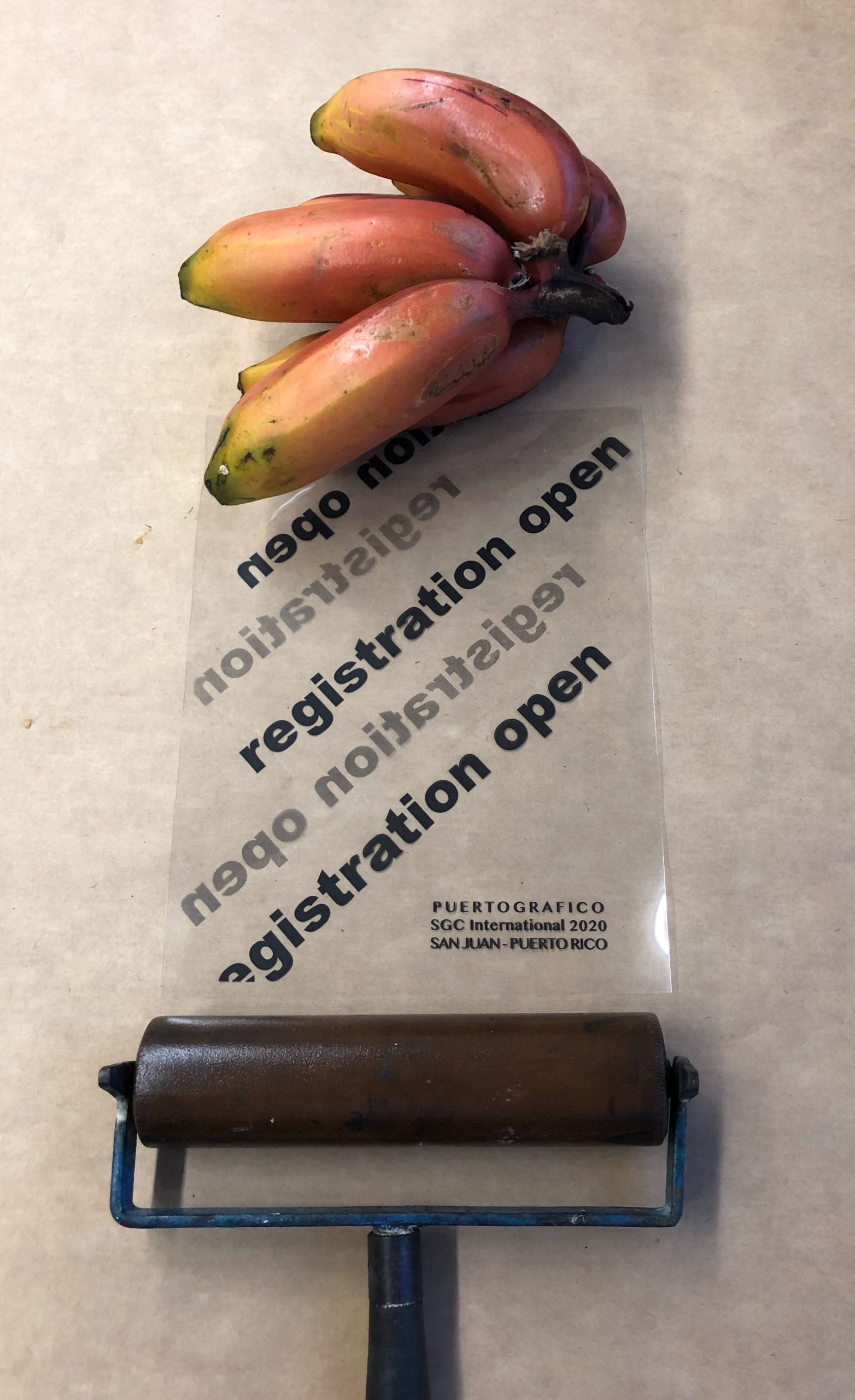
Puertográfico Registration Is Now OPEN / ¡La inscripción está abierta!
New this Year at SGCI: Open Portfolio ExhibitionsCommunity Service OpportunitiesThree-Minute Thesis for Graduate StudentsStudent Critiques SGC International’s vision for this meeting of cultures is to educate our membership on the complexity of the Puerto Rico/US...
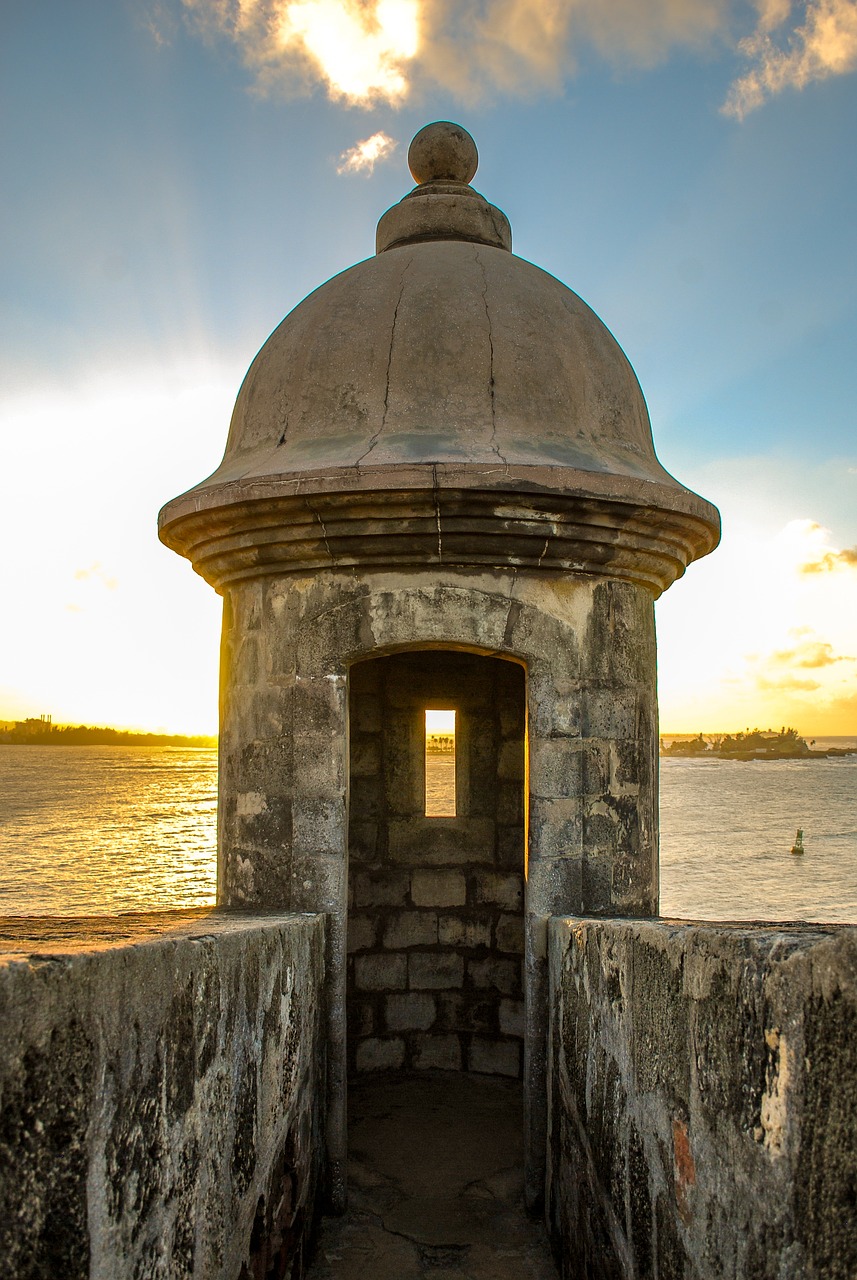
Help us bring down airline costs for Puertográfico!
SGC International is looking into ways to bring down airfares for everyone. Our conference steering committee is working with a travel agent in San Juan to get us the best airfare possible with several airlines. In order to do so, we need to know ASAP where will you...
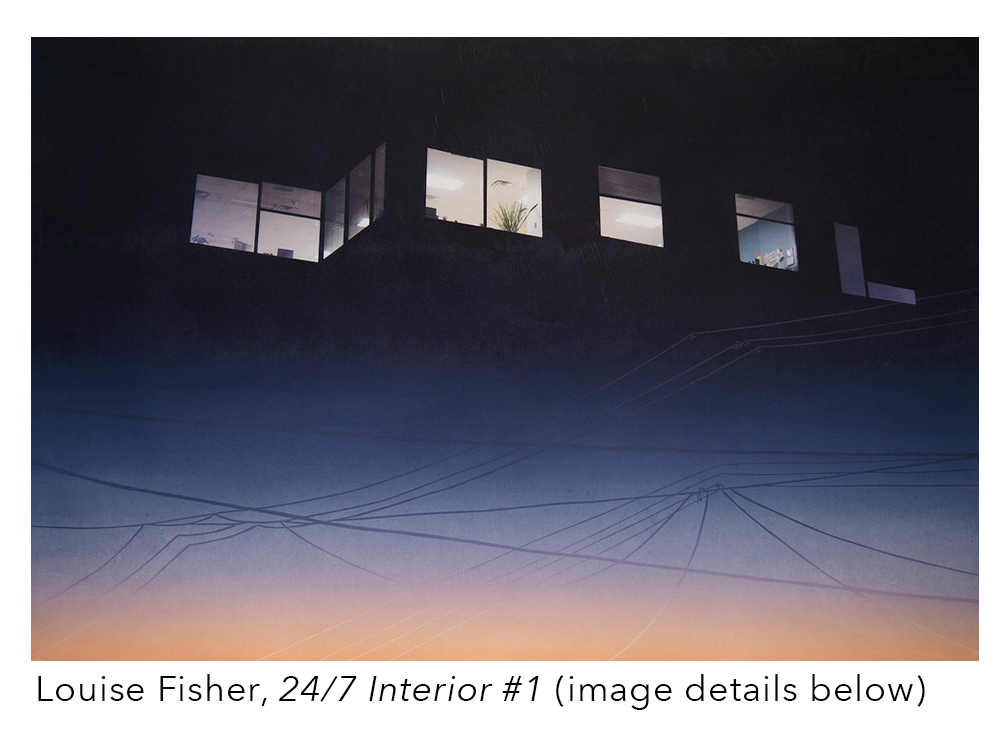
Open Portfolio Exhibitions
The printmaking world doesn’t just need artists and educators—
it needs it needs writers, gallerists, and curators.
it needs it needs writers, gallerists, and curators.
This year SGCI is putting a new twist on the Open Portfolio! We’re transforming it into a live, malleable “happening” where exhibitions will be culled from the work shown by Open Portfolio participants and featured at the conference as the 2020 Open Portfolio...
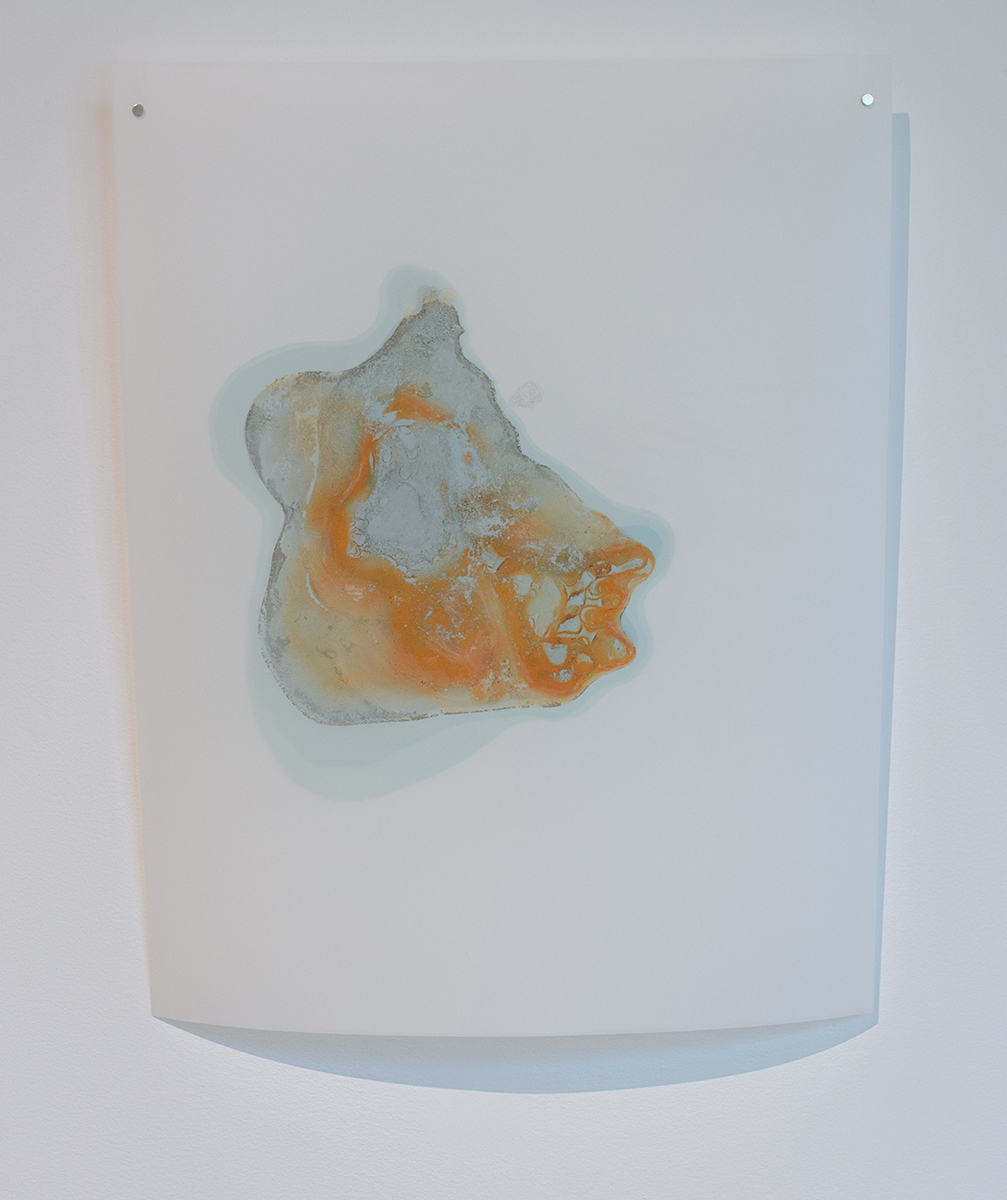
Anna Orbovich
University of Minnesota
Master of Fine Arts
Master of Fine Arts
“Staring out from a window seat, my view looks down on the fjord as the train tracks meander along the edge of a cliff. Pine trees zoom by at a blurred pace, drifting in and out of a heavy fog. At times, the haze becomes so dense only a map can tell me where I am. The terrain shifts as we cross into Sweden. There are less trees and more open spaces, rock outcrops and lakes. Trains carrying iron ore pass by heading towards Narvik.”
I’m fascinated by the lines, textures, formations and moments that have shaped this earth. I’m in awe at the magnitude of it all, determined to somehow transcribe and share my thoughts through prints, drawings, sculptures and text. By continually creating and sharing, I’m hoping to maybe preserve at least a little bit of the wildness left on this planet. My interest lies in the interconnectedness of trails and waterways. I wonder about how the influence of human footprints have an effect on the environment through resource extraction and the desire to explore wilderness.
My creative practice is an exploration of materials, processes, ideas and the outdoors with an effort to find a way to cope with making work knowing that it is impossible to leave absolutely no trace on the environments that I’m so amazed by.
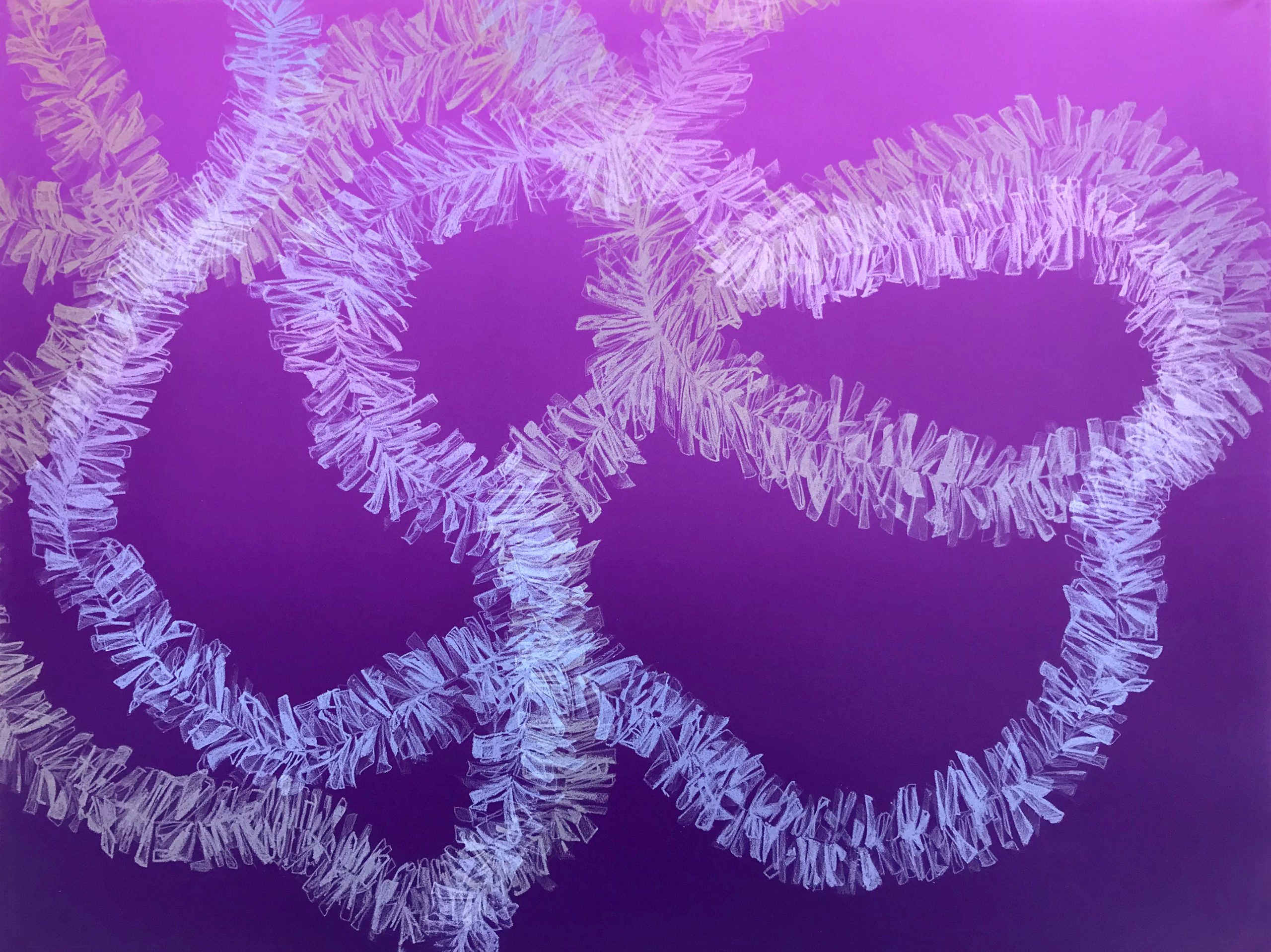
Julia Milbrandt
Cleveland Institute of Art
Bachelor of Fine Arts
Bachelor of Fine Arts
I live for moments that make me oooh and ah, make my eyes widen in wonder and giggle in excitement. These fantastical visual experiences interrupt our daily lives with a burst of razzle dazzle. Strange shadows created by sunlight as it passes through a space, colorful light inside of a car wash, the way light hits and bounces off reflective surfaces like plastic and glass; these are the moments I am drawn to, ones in which light and color momentarily abstract the world around us and alter our perception. My work documents everyday brilliant experiences, like a glistening wine glass, soap bubbles in the sink, or an oil slick puddle in the parking lot. These moments are ephemeral, changing with their surroundings and time; they are extraordinary in an ordinary way. I want to capture them at their peak, that brief magnificence, pause them in all of their glory.
Using chalk pastel or lithography I render objects that act as artifacts of the fantastic instances I am recording. The objects themselves are often quite cheap and artificial, but the experience they provide is true and wondrous. It is, they are, the glitter on the floor after the party.
Through drawing, I extract and portray these fanciful, magical, visuals from my everyday experience; enticing viewers to take time to pause and appreciate these mini moments of awe. Using bright, vibrant, candy-like colors, and the lure of reflective materials, my work attracts viewers with these characteristics. I depict objects full of intricate, swirling details created by their interaction with light. These small, ethereal moments of beauty are enlarged to a grand scale, creating elaborate compositions full of rich color and intricacies that imply movement and energy on the paper.
As my drawings teeter between abstraction and representation, they can incite curiosity in the viewer. The surface of the chalk or ink, and the subtle traces of my hand become visible upon close inspection. This re-imbues the image with a kind of magic. The magic of making and the magic of seeing. Through this mediation I am able to convey, in some small way, my wonder and pleasure of the original experience.
My drawings flow back and forth between something we may recognize, and something abstract, but in the end, like that wondrous moment, viewers must set aside any sort of logic and reason, and give into the power and brilliance of the image I present.
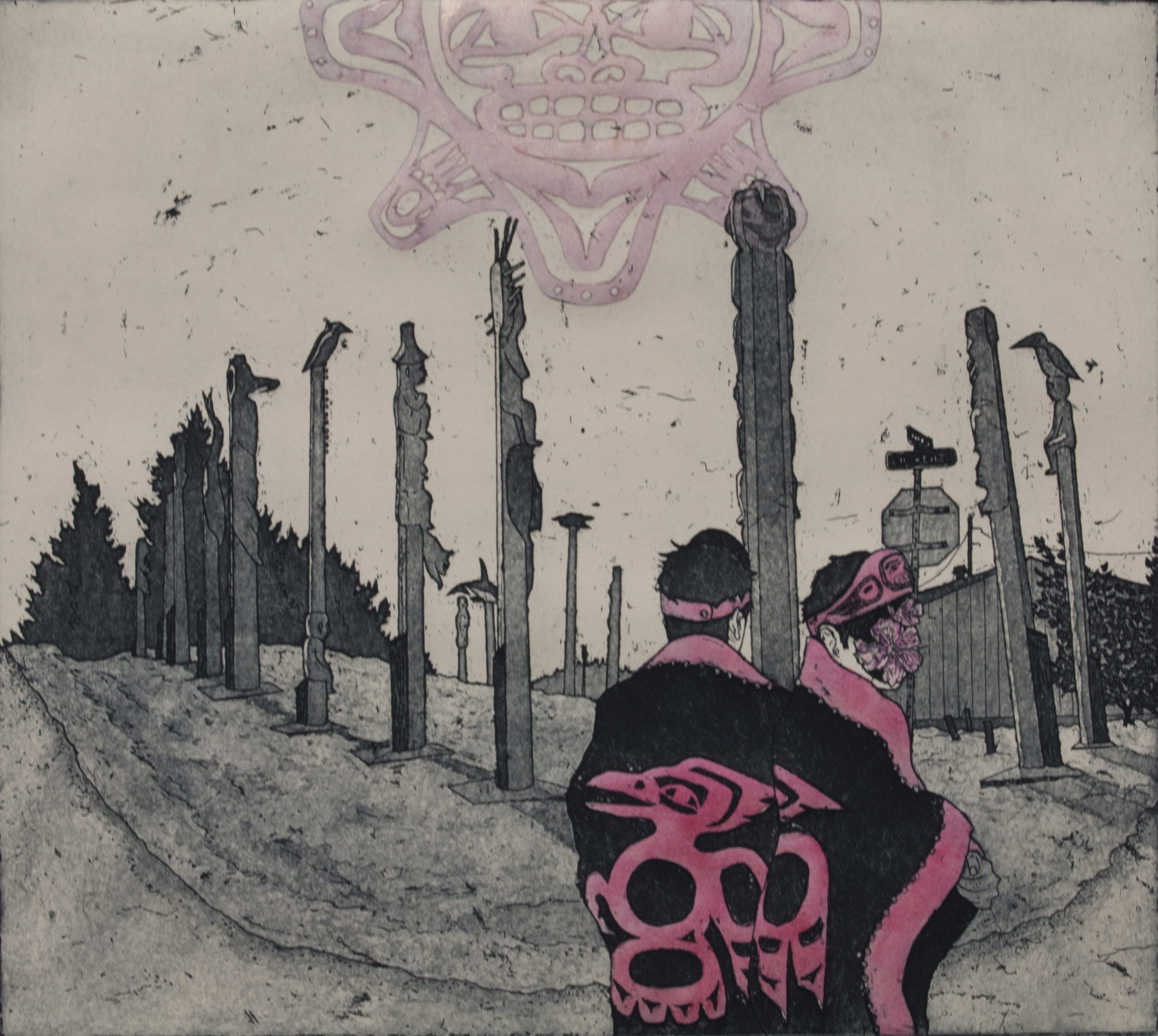
Ethan Lauesen
University of Alaska Fairbanks
Bachelor of Fine Arts
Bachelor of Fine Arts
Figurative Distortions, A Repose From Doubt, a thesis capstone of my undergraduate career is a collective body of work that comprises a visual dialogue of day to day experiences of Alaska Native and LGBTQIA+ experiences. The topics of intersectionality, community, and identity acceptance are core themes of my thesis work. Figurative distortions is a direct reference to the emotions associated with identity and the experiences of doubt, otherwise a lack of acceptance. To achieve this effect of figurative distortions I incorporate disconcerting elements into the figures, obscuring facial features, creating repetition of specific anatomical features as well as the entire figure itself. The premise behind the figurative distortions and body horror is to create an effect of emotional transference that alludes to the experience of identity rejection. The concept of a repose from doubt is fulfilled through an emphasis on a strong sense of place and the activities, routines, and culture that is associated with the city and rural scapes that I reference, places that tend to resonate with my own conscience and memory.
Essentially Figurative Distortions, A Repose From Doubt is an autobiographical, visual narrative that compiles my day to day experiences through intersectional context from relationships, community interaction, to identity acceptance and development. To emphasize the intimacy of my thesis I work on a relatively smaller scale, creating small etchings, encaustics, and collages that require more attention to detail. As a result my thesis work is basically a coming out story for my own non-binary gender identity and the gradual process of becoming more comfortable with that identity. The goal and intent for my thesis is to highlight the complexity of Alaska’s cultural dialogue, especially in regards to Alaska Native and LGBTQIA+ experience and fostering an appreciation for community and diversity .
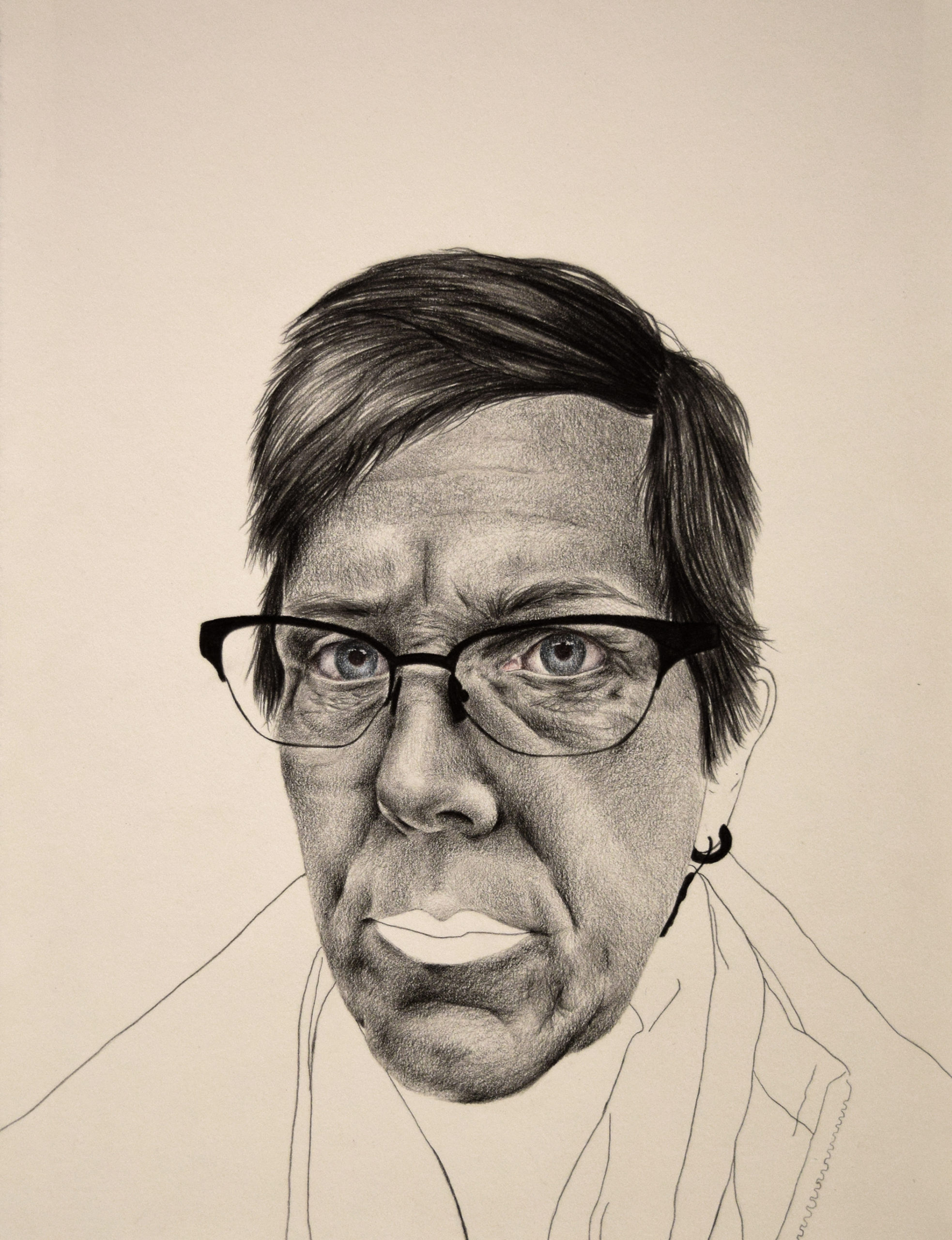
Stephanie Alaniz
West Virginia University
Master of Fine Arts
Master of Fine Arts
Uncertainty, lack of confidence, self-doubt, fear. These are all descriptors associated with having insecurities. Chances are, we deal with insecurities multiple times a day. These insecurities fill our minds and bodies with constant worry over things that feel trivial or foolish. Rather than discuss these feelings we keep them inside, never to be known by another. While insecurities live in a multitude of facets and are unique to each individual, we share worries about ourselves. In my experience, talking about these insecurities is taboo. However, I believe them to be a big part of what makes us human. As I think about these ideas and reflect on my fears, my work mirrors this consideration of our collective experience of insecurities, and the unease, fear, and anxiety that comes with feeling hyper aware of oneself. Through my work I analyze and create a conversation about insecurities with the intent to normalize them and help us find a mutual comfort.
For my insecurity portrait series, I have collaborated with the public and put out a call requesting participation. Using social media, direct contact, and word of mouth I have been able to work with people to create a series of drawings that together speak louder than separate. Along with a photograph of their face, each participant provides a list of insecurities and positives they associate with their physical face. This information determines what information will be rendered. The insecurities are executed with tone in black colored pencil while the positives are expressed in color. All graphic solid areas such as hair, eyebrows, jewelry, etc. are an aesthetic choice to help all drawn information visually read better. The drawings in this body of work support one another and show the collective experience of insecurities. These drawings prove that insecurities are a part of being human, and help to show the intersections that we all encounter regardless of our diverse identities. Texts about body politics, intersectional feminism, and empathy are all a foundation for my work. A lot of my research is based on the writings of Roxane Gay, Judith Butler, and William Kentridge who speak on identity politics, feminism, gender identity as performance, and thoughts and ideologies on the philosophy of drawing respectively. The use of my own body as well as others has been heavily influenced by artists such as Marina Abramovic, Jenny Saville, and Lorna Simpson.
The language each person uses to provide me with the information needed to render the portraits is so unique and universal at the same time. It’s incredibly relatable and has been used to create enclosures that coincide with each individual drawing. While each enclosures appears exactly the same externally, all internal elements and compositions are unique to the individual box, using various printmaking techniques such as screenprint, blind embossing, and lithographs to give voice to that person’s specific words. The enclosures existing this way is a metaphor for the assumptions we place on another person’s body, no matter how mundane or extreme, and the nuances of what one is dwelling about in relation to their own body and self. The intent of printing these words is so they transition from legible to illegible words as a way to reference obsession and dwelling. This is then created into scrolls, wall paper, and fodder for the insides of enclosures. Together all this work helps to inform one another. The drawings appear as clinical and specific, while the enclosures and the printed media are more creative and complex. This gives the viewer literal written word to understand the portraits, the individual, the collective, and intersectional experience we share as beings with insecurities.
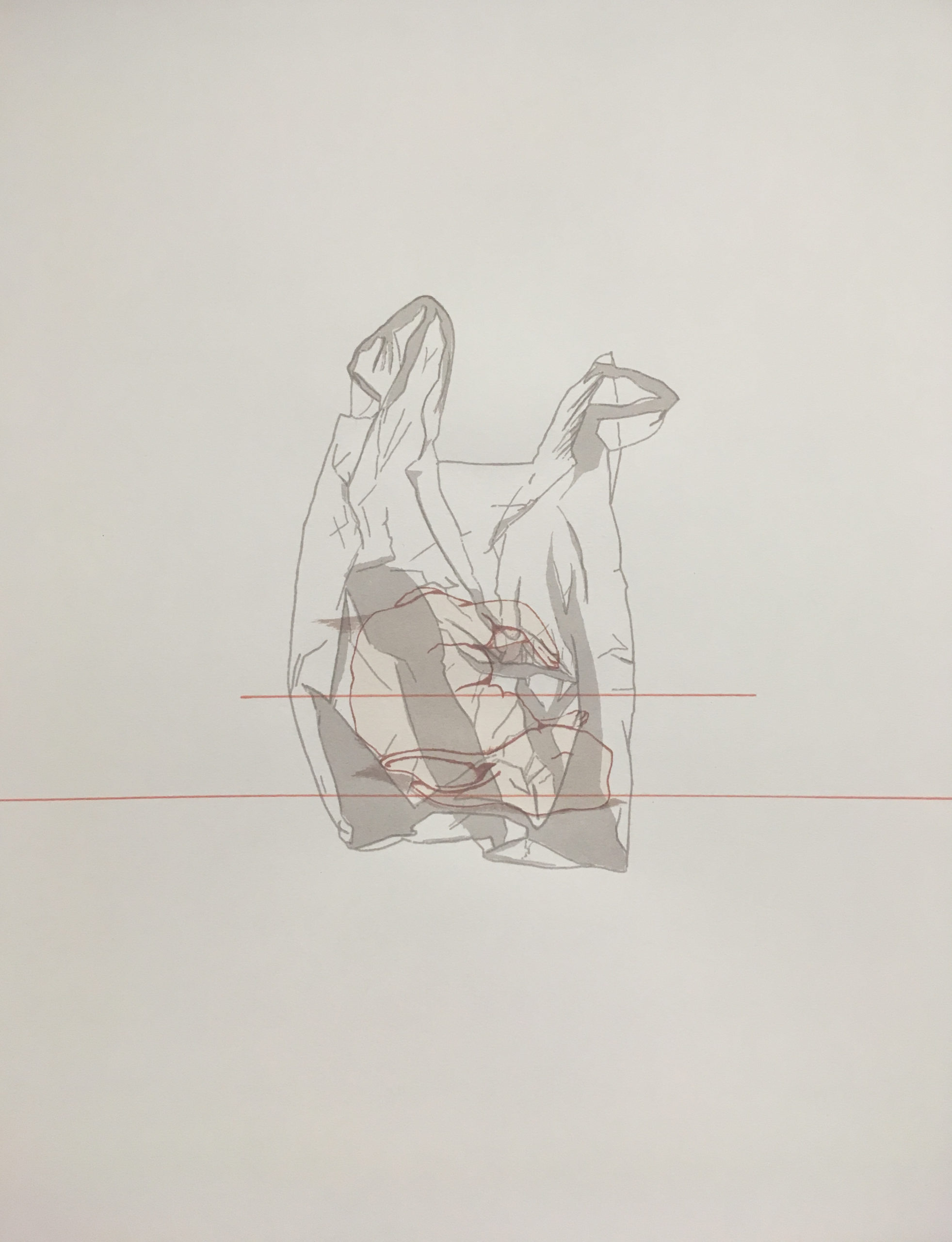
Hanna Kesty
Murray State University
Bachelor of Fine Arts
Bachelor of Fine Arts
“You’re overreacting” is a phrase that I have been told too many times that it has now become an immediate response to emotional situations. Because of this, most emotions are dismissed. The drawings and prints that I make are developed from a highly personal narrative discussing specific events, interactions and/or thoughts that arouse tension. They are an opportunity to admit damaging internal, uncomfortable conversations and interactions, while depicting tension and mental confinement. During the production process of a drawing or print there is a conversation of acknowledgement happening between these objects and myself, creating an uncomfortable, yet honest conversation.
Innocent, metaphorical objects help illustrate these internal disruptions. A wooden chair, vintage tv and a hare, along with a variety of secondary objects, are depicted in minimalistic settings dominated by negative space forcing the viewer’s attention on these objects, reinforcing mental confinement while adding a somber and tense disposition. Through the use of selective color, I am able to shed light on those tense moments even more. The combination of objects create a small moment within a larger narrative. The chair represents stability, comfortable or not and the vintage tv represents static, mental noise and implied disconnection. The hare is at the bottom of the food chain, and they are hyper-aware along with being naturally vulnerable and their solitary nature. Silkscreen is my printing medium of choice due to its encouragement of transparency and layers, allowing my images to be soft and subtle.
Artistic influences derive from mixed-media artist Toba Khedoori, with solitary spaces she creates through minimal imagery and compositions. I also look to lithographer Kathryn Polk for her use of interactions between figures and objects, as well as her muted color pallet. Other influences are words. Words are powerful; from poems such as milk and honey by Rupi Kaur, to music, or simply everyday conversations and the lack thereof. Words shape our day to day lives.
Overreaction or not, your body is trying to tell you something. Something is causing distress and tension, and the last thing we want to hear is that we are overreacting. My work brings light to interactions and concepts that cause emotional strain and the desire to understand why.
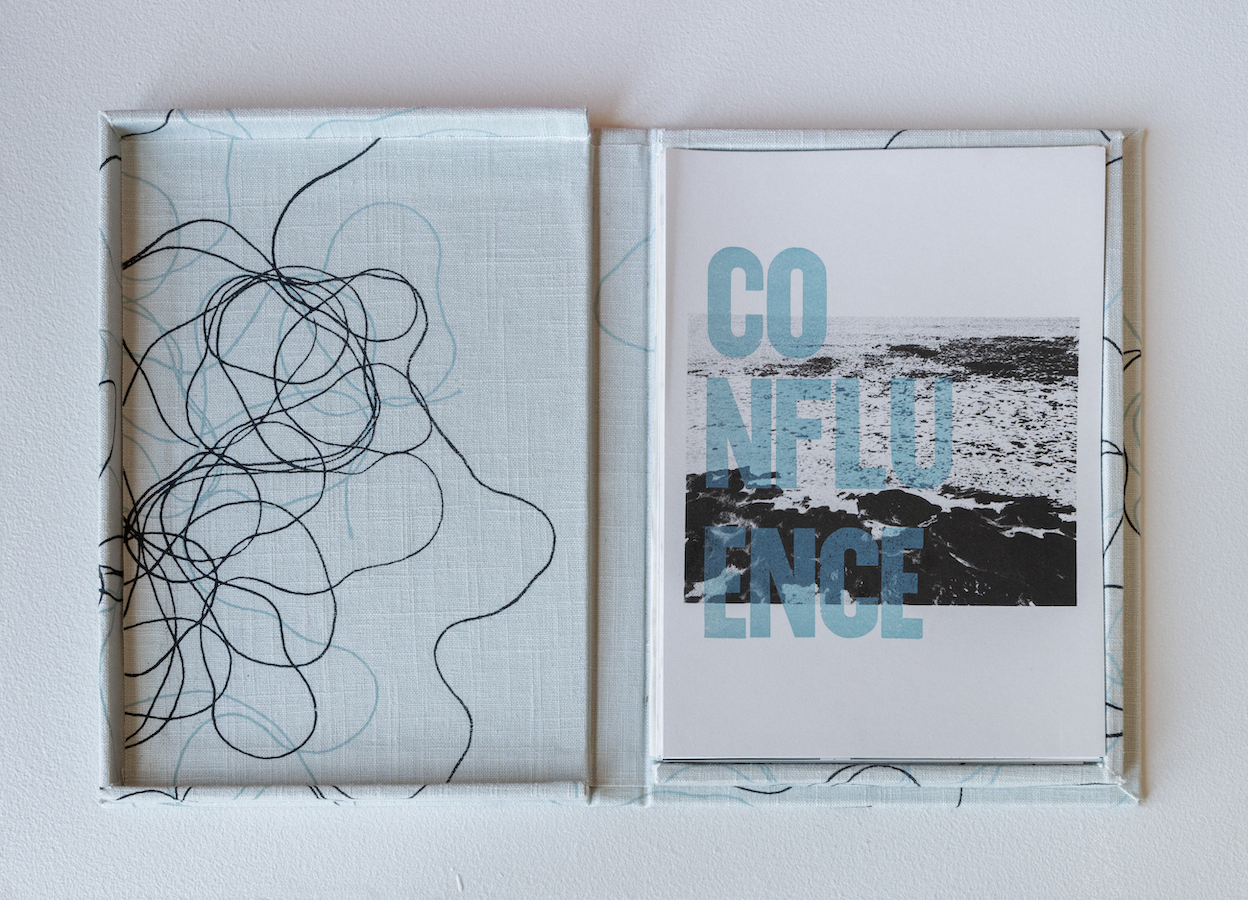
Rebecca Giordano
Pacific Northwest College of Art
Bachelor of Arts
Bachelor of Arts
I am an artist both from and residing in the Pacific Northwest. I cross media within my art practice but most commonly, my work comes out of print, collage, artist book, and textile based techniques.
I explore the power of memory, the intense moments that nostalgia delivers, and how these experiences can constitute home. I aim to allow the vulnerability and closeness that one feels in relation to a person, place or object to seep into the crevices of my compositions.
Confluence, consists of prints and a list poem, made from my journal entries while living in Ghent, Belgium for five months. Derived from the Celtic word ganda, Ghent means confluence; it is the city where the Scheldt and Leie rivers meet. Growing up near the ocean in the Pacific Northwest, my work has often related to water. Travelling to a place that is defined by its waters meeting elicited a sense of poetry and discovery for me.
Be it a physical representation or images generated from memory, my work is a window into my identity as an artist, dreamer and member of a community. My aim is to communicate both beauty and sentiment, move beyond the constraints of how place and self are traditionally defined, and to project, through my work, how I process the world in which we coexist.

